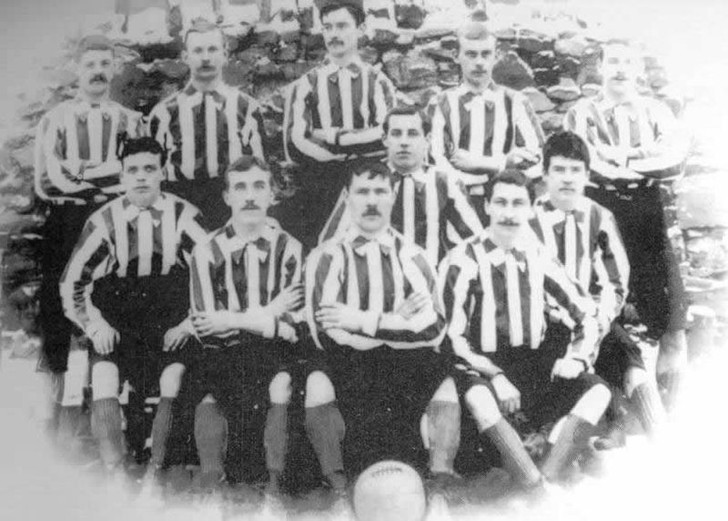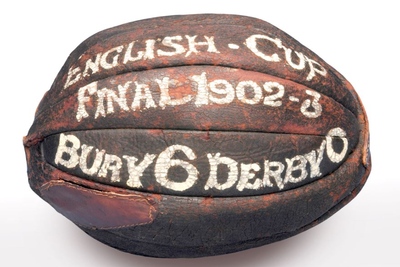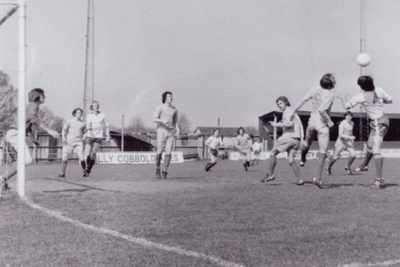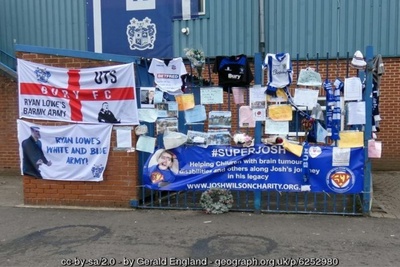In August of 2019, Bury Football Club faced a devastating blow as they were expelled from the English Football League due to their failure to secure a takeover deal and meet their financial commitments. This unfortunate event came at a time when another club, Bolton Wanderers, was also facing financial struggles. However, Bolton Wanderers managed to avoid a similar fate with the help of a successful takeover deal.
Bạn đang xem: Bury Football Club’s Expulsion: A Look at the History and Future of Gigg Lane
The expulsion of Bury FC was a cruel blow to both the club and its loyal fans. The club had recently achieved promotion to League One, but their financial troubles had been looming for some time. In fact, players had not been paid as early as November of 2018. Despite efforts to keep the club afloat, including a sale for only £1, the problems persisted.
Even as the team performed well on the pitch under the management of former Bury player Ryan Lowe, they faced additional challenges. The club received a winding-up order from Her Majesty’s Revenue & Customs, leading fans to question how such a situation had come to pass.
The History of Bury FC
Bury FC has a rich history dating back to its founding in 1885. The club was established when two local church teams, Bury Wesleyans and Bury Unitarians, came together under the leadership of football enthusiast Aiden Arrowesmith. Despite the controversial nature of professionalism in football at the time, both teams agreed that the new club should be professional.
The club secured a lease on land at Gigg Lane, generously provided by the Earl of Derby’s estate. Their inaugural match on September 12, 1885, against a team from Wigan marked the beginning of Bury FC’s journey.
Bury FC was one of the founding members of the Lancashire League in 1889. They quickly established their dominance, finishing second in the first season and winning the title in the subsequent two seasons. The club also clinched their first Lancashire Cup in 1892. It was during this time that the club earned their famous nickname, “The Shakers,” after their manager’s rallying cry before a cup final.
In 1894, Bury FC was elected to the Football League and began their first season in the Second Division. They won the title that same season, securing a place in the test match against the bottom club of the First Division. Bury emerged victorious against Liverpool, who were still a relatively new club at the time. This victory earned Bury FC a spot in the top-flight, where they remained for 17 consecutive seasons before being relegated in 1912.
During their time in the top-flight, Bury FC achieved notable success with two FA Cup victories in 1900 and 1903. They reached the final in 1900 without playing a single home game, and in 1903, they didn’t concede a goal throughout their cup run. Their journey to the final that year required them to wear the kits of other teams due to the conflicting colors with their opponents, Derby.
A Rollercoaster Ride Between Divisions
Xem thêm : 7 Great Resources for Football Scouts
In the years following their time in the top-flight, Bury FC settled into the Second Division. Although they came close to achieving promotion back to the top-flight after World War II, they were ultimately relegated in 1957. The club experienced a series of promotions and relegations between the top three flights of English football during the 1960s and 1970s.
It was under the management of Stan Ternent that Bury FC enjoyed a successful period, securing successive promotions in the 1990s and winning the Division Two title in 1997. This propelled the club back to the second-tier for the first time since the 1960s, though they were relegated once again at the end of the season.
The Start of Financial Troubles
The 2001-2002 season brought financial woes to Bury FC when the collapse of ITV Digital impacted lower-league clubs. Bury FC faced administration and the possibility of folding altogether. Thanks to the dedication of supporters and a successful fundraising campaign, the club managed to stay afloat.
Despite overcoming their financial difficulties, the club faced ongoing challenges. In 2012, poor attendance figures led to a transfer embargo, and in 2013, Stewart Day took over the club, paying off debt and leading the team to promotion back to League One. However, the club was eventually relegated to League Two in 2018, only to secure promotion once again the following season.
Steve Dale’s acquisition of the club in December 2018 initially brought hope, as he paid off an outstanding tax bill to HMRC. However, by April 2019, the club’s financial problems resurfaced.
Expulsion from the Football League
Steve Dale admitted in April 2019 that the club’s financial issues were more severe than he had realized when taking over. He suggested a Company Voluntary Arrangement (CVA) as a possible solution, aiming to pay off the club’s creditors by offering 25% of the owed amount to entities like HMRC.
However, the English Football League (EFL) considered a CVA an insolvency event, threatening the club with a 12-point deduction before the season even began. The EFL demanded further reassurances regarding the club’s ability to meet the conditions of the CVA, which were not provided.
Consequently, the club’s opening fixtures were suspended. Bury FC was given a deadline of 14 days to present a plan for debt repayment. Despite offers to buy the club, Steve Dale rejected them in pursuit of higher bids. The EFL granted a 48-hour extension to the expulsion deadline when four potential buyers expressed interest. Unfortunately, C&N Sporting Risk pulled out of a deal just an hour before the deadline, leading to Bury FC’s unprecedented expulsion from the Football League on August 27, 2019.
How Did This Happen?
Xem thêm : The Evolution of Football Pitch Markings
The question on everyone’s mind following the expulsion of Bury FC is how such a situation was allowed to unfold. Modern football is often associated with significant financial resources. However, there are rules in place that prevent clubs from different divisions from assisting those in financial distress. Additionally, serious questions arise concerning the effectiveness of the Football League’s “fit and proper person” test, intended to prevent individuals without the necessary means or competence from taking over clubs and leading them into detrimental situations.
Players voiced their concerns about Steve Dale’s management of the club, with resignations and protests underscoring the lack of suitability of his stewardship. Regrettably, the EFL distanced itself from any responsibility for Bury FC’s demise, referring to it as one of the darkest days in the organization’s history while alluding to the unity of the “football family.”
Although football may be awash with money, it becomes clear that mishandling a club’s finances and prioritizing personal gain over the preservation of a club’s heritage can result in dire consequences.
What Lies Ahead for Gigg Lane?
Gigg Lane, the historic home of Bury FC, has played a significant role in the club’s journey since its inception in 1885. With a capacity of 35,000, the stadium has never witnessed a league crowd of less than 1,000 supporters.
Over the years, Gigg Lane has undergone various sponsorship arrangements, including a 2013 deal with JD Sport that led to it being renamed the JD Stadium. In February 2019, a new sponsorship agreement was announced with Planet-U Energy, signaling the stadium’s transition to being powered by renewable energy.
The future of Gigg Lane remains uncertain and closely tied to the fate of Bury FC. Liquidation appears imminent, as expulsion from the Football League means no revenue can be generated from match attendance, rendering the club non-operational.
Current players and academy members are free to seek opportunities elsewhere, while the stadium itself is mortgaged to Capital Bridging Finance Solutions for £3.7 million. Bury Council has stated that the ground is protected for sporting purposes, potentially limiting any future development.
In the past, Gigg Lane has hosted reserve team matches for local clubs such as Manchester United and Bolton Wanderers. It has also been utilized for various other sporting events, including rugby league, baseball, cricket, and lacrosse. If Bury FC supporters manage to establish a new club in the future, it is certain that they would cherish the opportunity to play matches at their historic home. However, for now, that remains a distant dream.
FAQs
1. What led to the expulsion of Bury FC from the English Football League?
Bury FC faced expulsion due to their failure to secure a takeover deal and meet their financial obligations. The club’s financial troubles and mismanagement ultimately led to this unfortunate outcome.
2. How did Bury FC’s history unfold before their expulsion?
Bury FC had a rich history dating back to their founding in 1885. They achieved success in the top-flight, winning two FA Cups and consistently competing in various divisions. However, financial problems plagued the club for many years.
3. What is the future of Gigg Lane?
The future of Gigg Lane is uncertain, as it is closely tied to the fate of Bury FC. Liquidation appears likely, and the stadium’s development potential may be restricted due to its protected status for sporting purposes.
4. What are the lessons to be learned from Bury FC’s expulsion?
Bury FC’s expulsion highlights the importance of responsible financial management and the need for thorough scrutiny of club owners. It also emphasizes the significance of regulations and support systems within football organizations to prevent such situations from arising.
Conclusion
The expulsion of Bury FC from the Football League serves as a stark reminder of the consequences of financial mismanagement and inadequate governance within football clubs. The rich history and legacy of Bury FC have been marred by the tragic events that led to their expulsion.
As football fans and enthusiasts, it is our responsibility to reflect upon these lessons and advocate for better practices, ensuring the preservation of clubs’ heritage and the protection of the footballing community as a whole. Let us not forget the significance of responsible ownership and the impact it can have on the livelihoods of players and the dreams of supporters.
To learn more about Bury FC and its history, visit Movin993.
Nguồn: https://movin993.com
Danh mục: Tin tức










